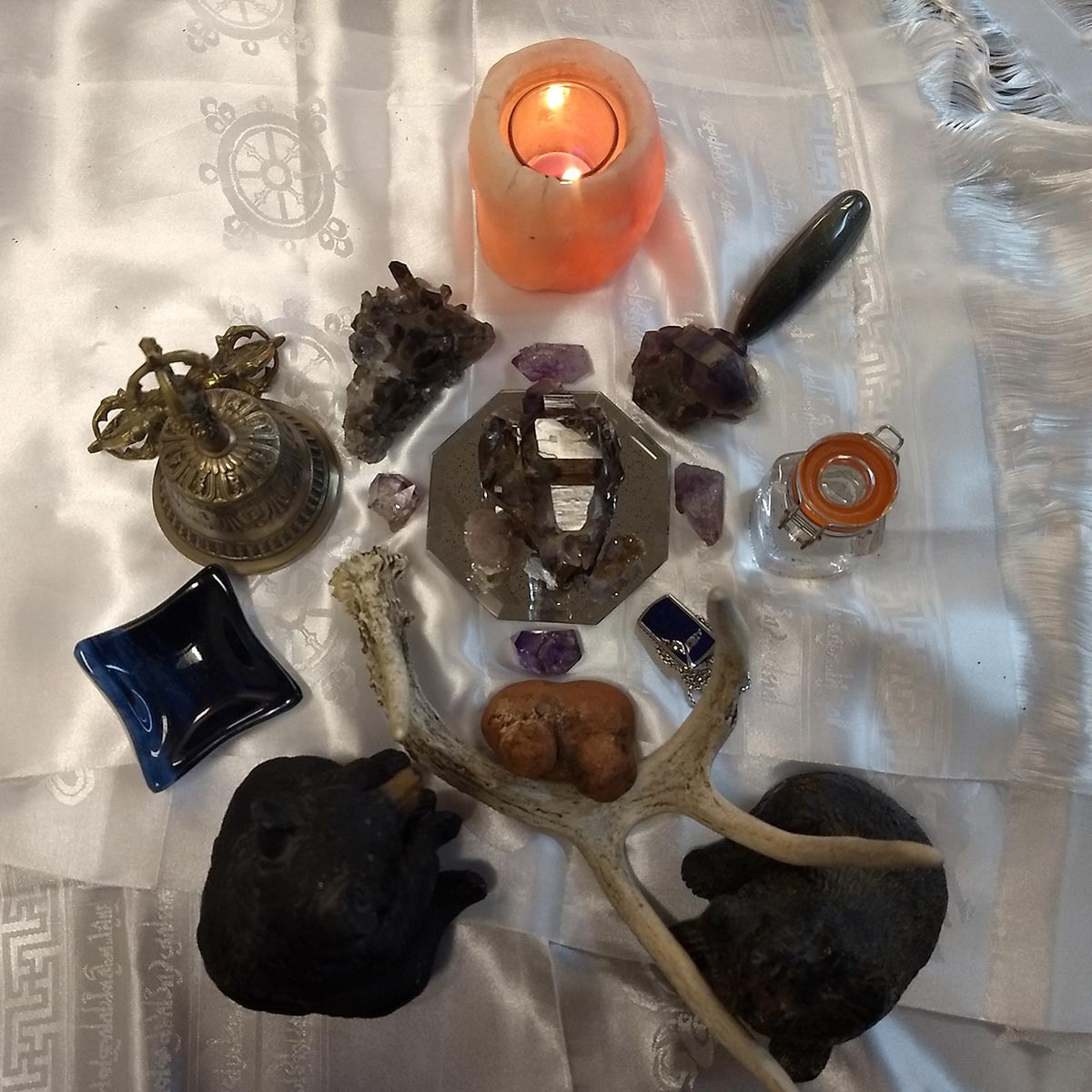As we navigate the vast landscape of human connection, we encounter a myriad of intimate relationship types that exist in the world today. These forms of intimate bonds, much like humans themselves, come in all shapes and sizes, reflecting the rich diversity and complexity of human experience. In our journey of understanding these intimate relationships, it is crucial to acknowledge that the traditional model of monogamous, heterosexual relationships is not the only path to emotional fulfillment and companionship. There are countless other forms of relationships that resonate with different people, each as legitimate and enriching as the next.
Contents
Examples of Intimate Relationship Paradigms
- Monogamy – typically, a relationship involving two people who are exclusively committed to one another.
- Non-monogamy – a relationship structure that allows for intimate involvement with more than one person, encompassing many subtypes like polyamory, swinging, and open relationships.
- Queer relationships – these relationships exist outside the heteronormative paradigm and include a broad spectrum of identities and orientations.
Knowing where we lean in this spectrum is not just about self-awareness, but also about authenticity, self-respect, and respect for others. It is about living our truth and allowing others to live theirs without judgment or imposition. It is about acknowledging that love, intimacy, and connection come in many forms, and there is no one-size-fits-all approach to relationships.
“Understanding our relationship leanings is less about labels and more about understanding our own needs, desires, and boundaries. It is a process of self-discovery that can lead to more fulfilling and authentic relationships.”
In the following sections, we’ll delve into these relationship types in greater detail, exploring their nuances, challenges, and potential rewards. By doing so, my hope is that we can broaden our understanding of what it means to connect with others. Perhaps we can find a relationship model that feels right for us, one that truly resonates with our unique selves.
Breaking Down the Stigma of Non-Monogamous Relationships
Let’s begin this journey by challenging the societal perceptions that often unfairly stigmatize non-monogamous relationships. When most people think of relationships, they imagine a monogamous pairing between two individuals. This is primarily due to societal norms, religious beliefs, and cultural practices that have been entrenched over centuries. However, it is critically important to recognize that human relationships are as diverse as humanity itself. Non-monogamous relationships are a valid and significant part of that vast spectrum.
Non-monogamous relationships, as the name suggests, involve more than two individuals in an intimate relationship. This does not imply infidelity or deception, as is often mistakenly believed. Non-monogamous relationships are based on mutual consent and understanding, with all parties aware of and agreeing to the relationship’s structure. They can come in various forms, such as polyamory, open relationships, and swinging, to name a few.
Remember, the nature of a relationship does not determine its validity or value. What truly matters are the principles of understanding, respect, consent, and love.
If you would like a more in-depth review of what makes for a strong relationship, read “Is Change Ending Your Relationship? How to Figure It Out.”
Forms of Non-Monogamous Relationships
Below are brief descriptions of some of the various forms of non-monogamous relationships:
- Polyamory: This involves multiple people engaging in an intimate relationship with the full knowledge and consent of all parties. Polyamorous relationships can be hierarchical (where there is a primary partnership and other relationships are secondary) or non-hierarchical (where all relationships are considered equal).
- Open Relationships: In this type of relationship, a couple allows each other to have other sexual and/or romantic relationships. The terms of an open relationship vary widely and are often defined by the individuals involved.
- Swinging: Often considered a form of open relationship, swinging typically involves committed couples swapping partners for sexual activities. It is typically more about recreational sex rather than forming romantic relationships.
Each of these forms of non-monogamous relationships has its own unique dynamics, benefits, and challenges. It is vital to remember that what works for one person or couple may not work for another. The key is to find what feels right for you, without allowing societal pressures or misconceptions to dictate your choices.
Breaking down the stigma of non-monogamous relationships requires both understanding and acceptance. It requires challenging preconceived notions and embracing diversity in human relationships. As we move forward in this journey of understanding, let’s remember to respect all forms of relationships, and to honor the choices of individuals in how they choose to express their love and intimacy.
The Rise of Polyamory and Open Relationships
Like an unfolding kaleidoscope, the ways in which we relate to and interact with one another are ever-changing and redefining themselves, much like we do as individuals. And, while these types of relationships are not new in the grand scheme of human history, they are certainly experiencing a resurgence in modern times.
Open relationships and polyamory (poly, from the Greek polys, or “many,” and amor, from the Latin for “love”)—relationships where individuals have more than one intimate partner, each of whom is aware and consenting—challenge the traditional monogamous model that has been the standard for centuries. It’s important to note that this is not about promiscuity or lack of commitment, rather it is about honesty, freedom, and a different form of commitment—one that acknowledges and embraces the complexities and fluidity of human love and attraction.
“While these forms of relationships are often conflated, they are distinct in their own ways. An open relationship typically refers to a couple who allow each other to have sexual relationships outside their union. Polyamory, on the other hand, often refers to having multiple loving relationships, which can also include emotional connections, not just sexual ones.”
~Health Line
Acceptance of Alternative Relationships Models
The rise of polyamory and open relationships can be partially attributed to the increasing public awareness and acceptance of alternative relationship models. As norms shift and evolve, more people are feeling empowered to explore different forms of intimate connections that align with their individual desires, needs, and values. This can be seen as a form of personal and societal evolution. Its a breaking away from confining norms and an embrace of diversity in human connection.
It’s critical, however, to understand that these relationships require a great deal of communication, openness, honesty, and mutual respect. The participants must always uphold consent, not only with regards to sexual activity, but also in maintaining the relationship structure itself. Any form of relationship, regardless of its type, can only thrive when these elements are in place.
Each of these relationship structures, whether traditional monogamy, open relationships, or polyamory, have their own unique benefits and challenges. For some, the ability to pursue multiple connections provides a sense of freedom and fulfillment. For others, the challenge of managing multiple relationships and the potential for jealousy and insecurity may be overwhelming. Ultimately, there is no one-size-fits-all model for relationships, and it’s up to each individual to discover what works best for them.
Exploring Asexual and Aromantic Relationships
As we embark on this journey of exploring the different realms of intimate relationships, it’s integral that we acknowledge and understand the concepts of asexuality and aromanticism. These terms, often misunderstood or overlooked, represent distinct spectrums of human attraction (or the lack thereof). My belief (and one that’s shared by many experts in the field) is that an understanding of these spectrums can lead to a more inclusive and empathetic society.
Asexuality, for those unfamiliar with the term, refers to a lack of sexual attraction towards others. This doesn’t suggest that asexual individuals are incapable of romantic affection, but simply that they don’t experience sexual attraction. An important point to note is that asexuality isn’t synonymous with celibacy (a conscious choice to abstain from sexual activity), as it exists irrespective of one’s sexual activity or inactivity. Asexual people can, and often do, engage in romantic relationships—it’s the sexual attraction component that’s missing.
On the other hand, aromanticism pertains to individuals who do not experience romantic attraction. Aromantic people can form strong, intimate bonds with others, but these relationships generally lack the romantic component typically associated with such bonds. Some aromantics may engage in sexual relationships, while others may not. The absence of romantic attraction doesn’t negate the capacity for other forms of attraction, such as aesthetic or platonic.
It’s vital to remember that asexuality and aromanticism are spectrums, not absolutes. This means there are varying degrees within each category (with terms like graysexual and demiromantic detailing some of these nuances). The experience of every asexual or aromantic individual is unique, and it’s crucial we respect these differences instead of painting everyone with the same brush.
Exploring Nonbinary Relationship Dynamics
As we delve deeper into the realm of relationships, it is essential that we take a moment to explore the dynamics of nonbinary relationships. Often overlooked in traditional discussions of partnerships, these relationships provide a unique set of experiences and challenges that are both enlightening and enriching.
I firmly believe that understanding these dynamics (which often lie outside the normative spectrum) is fundamental to fostering a more inclusive, comprehensive understanding of human intimacy. By acknowledging and validating these less conventional relationships, we move closer to creating a society that respects and celebrates diversity, even in matters of the heart.
Nonbinary relationships, in their essence, involve individuals who do not strictly identify as male or female. This can also include those who identify as both genders, neither, or a combination thereof. It’s a broad and complex spectrum, and the dynamics within these relationships can differ greatly from those in binary relationships.
In the context of a relationship, nonbinary can also refer to the relationship structure itself, not just the gender identity of the individuals involved. The relationship may not follow traditional scripts of monogamy or heteronormativity, and could include polyamory, relationship anarchy, or other forms of non-monogamous partnerships.
Key Aspects of Nonbinary Relationship Dynamics
- Flexibility: Nonbinary relationships often involve a greater degree of flexibility in roles and expectations. There is less pressure to conform to societal norms, allowing the individuals involved to define the terms of their relationship themselves. This can lead to a diverse range of relationship structures, each unique to the people involved.
- Open Communication: These relationships necessitate open, honest communication about identities, boundaries, and expectations. Nonbinary individuals might feel misunderstood or misrepresented in societal discourse, making clear communication within the relationship all the more crucial.
- Inclusivity: Nonbinary relationships inherently defy heteronormative standards, making them inclusive spaces for individuals who fall outside traditional gender binaries. This results in a relationship dynamic that prioritizes understanding, acceptance, and validation of the other’s identity.
| Characteristic | Impact on Relationship Dynamics |
|---|---|
| Flexibility | Allows for exploration and personalization of relationship roles and expectations. |
| Open Communication | Enhances understanding and transparency within the relationship. |
| Inclusivity | Provides a safe space for self-expression and validation of non-traditional identities. |
Understanding nonbinary relationship dynamics is a journey, one that invites us to challenge our preconceptions and expand our definition of what relationships can be. It’s a testament to the wonderful diversity of human experience and a reminder that, in love and relationships, there truly is no one-size-fits-all.
Relationships with Different Sexual Orientations
At the heart of every intimate relationship lies a fundamental truth: they are as diverse and unique as we are. We each bring our individual experiences, identities, and orientations to the table, creating a rich tapestry of human connection. This is particularly true when it comes to relationships involving individuals with different sexual orientations. These relationships, whether they be friendships, romantic relationships, or something in between, can offer unparalleled opportunities for growth, understanding, and connection. But they also often involve unique challenges and considerations.
Around 10% of adults in the United States identify as LGBTQ+.
Understanding Different Sexual Orientations
Sexual orientation, often classified as heterosexual, homosexual, or bisexual (but extend to other identities such as asexual, pansexual, and more), refers to an individual’s enduring pattern of emotional, romantic, and/or sexual attractions. For some, this orientation aligns with society’s traditional expectations (i.e., heterosexuality). For others, it may not (i.e., homosexuality, bisexuality, et al.). There are also those who identify as queer. This term that encompasses a spectrum of sexual and gender identities that are not exclusively heterosexual or cisgender. It’s crucial to understand this diversity in order to navigate relationships with respect and empathy.
Navigating Relationships with Different Sexual Orientations
When it comes to navigating relationships where sexual orientations differ, the key is open-mindedness and open communication. It’s about understanding and acknowledging each other’s experiences and identities, while maintaining mutual respect and consent.
- Communication: Honest, open communication is crucial in any relationship, but it becomes even more important when navigating differing sexual orientations. Discussing feelings, attractions, and concerns openly and without judgment can foster a deep sense of trust and understanding.
- Respect: Respect for each other’s identities and orientations is paramount. This means recognizing and valuing the individuality of the other person. It means not making assumptions or judgments based on their sexual orientation.
- Consent: In any intimate relationship, consent is key. This is especially true when sexual orientations differ. Both parties must feel comfortable and agree with the dynamics of the relationship, whether it be in emotional, romantic, or sexual contexts.
Remember, our sexual orientation does not define us completely; it is just one facet of who we are. In relationships with differing orientations, it’s critical to maintain an open dialogue, respect each other’s identities, and always prioritize consent.
Relationships involving individuals with different sexual orientations can be as rewarding and fulfilling as any other. They may present unique challenges, but these can be navigated successfully through understanding, open communication, and respect. Let’s continue to embrace the diversity of human connection. Let’s strive towards a world where all relationships, regardless of sexual orientation, are valued and recognized for their unique richness and potential.
The Two-Spirit Tradition in Native American Spirituality
As we continue to explore the varied landscape of human relationships, it’s important to recognize that the concept of diversity in intimacy is not a novel phenomenon. Indeed, for centuries, certain cultures have recognized and respected a variety of relational structures. They’ve often gone far beyond the traditional dyadic model. One such example is found within Native American spirituality, where the tradition of the Two-Spirit holds a significant place.
The term Two-Spirit is a contemporary one, adopted in the 1990s by Indigenous communities in North America. However, the concept it represents — that of an individual embodying both masculine and feminine spirits, and occupying a special social and spiritual role within their community. It is deeply rooted in the traditions of many Indigenous cultures.
“Two-Spirit” serves as an umbrella term for the myriad ways in which this concept has been understood and lived across diverse Indigenous cultures. Not merely a matter of sexual preference, it encompasses a holistic view of one’s identity, role and relationships within their community.
The Two-Spirit in Relationships
Two-Spirit individuals often held, and continue to hold, unique roles within their communities. Their relationships were not confined by the conventional boundaries of gender or sexuality. In fact, they often transgressed these boundaries, reflecting a fluid understanding of love and intimacy. This fluidity allowed for relationships of all shapes and sizes.
- Some Two-Spirits formed relationships with people of the same biological sex, often serving as a bridge between genders.
- Others entered into relationships with people of the opposite sex, in roles that may not conform to traditional gender expectations.
- Many Two-Spirits held special roles as mediators, healers or leaders, shaping their relationships within the community.
In our quest to understand the diverse forms of human intimacy, the Two-Spirit tradition offers valuable insights. It challenges our conventional understanding of relationships and invites us to question the boundaries we often take for granted. Ultimately, it demonstrates that relationships can truly come in all shapes and sizes, each one offering its own unique contribution to the fabric of human connection.
Challenges Faced by Interfaith Relationships
Entering into a discourse on the challenges faced by interfaith relationships, I am reminded of the old adage, “Love conquers all.” It’s a beautiful sentiment, one that, in an ideal world, would hold true for all forms of love. However, reality often presents us with a complex maze that goes beyond simply falling in love and living happily ever after. This is especially true for interfaith relationships where differences in religious beliefs can present unique challenges.
In my experience, I’ve discovered that interfaith relationships, like all other relationships, have their fair share of hurdles. However, they also have specific struggles that are uniquely their own. I will, therefore, attempt to shed light on some of these challenges.
1. Disapproval from Family and Society
One of the most common issues faced by interfaith couples is the disapproval from their families or from society (sometimes even both). These are the people we turn to for solace and support, and when they don’t approve of our choices, it can be incredibly heart-wrenching. And while it’s easy to say, “Ignore the naysayers,” doing so can be quite difficult. Especially when those naysayers happen to be your loved ones.
2. Differing Religious Practices and Traditions
Another common challenge faced by interfaith couples is the differences in religious practices and traditions. Holidays, rites of passage, dietary restrictions, and even daily prayers can be a source of conflict if not addressed appropriately. Being respectful and open to each other’s beliefs, traditions, and practices is essential, but it can require a significant amount of effort and understanding.
3. Raising Children
When it comes to raising children in an interfaith household, the challenges can multiply. Questions about which faith the children will be raised in, how to celebrate religious holidays, and how to handle rites of passage can create conflict and confusion. It’s a delicate matter that requires thoughtful discussion and compromise from both partners.
While these are some of the most common challenges faced by interfaith couples, they are by no means the only ones. Each relationship is unique and will face its own set of challenges. However, I firmly believe that with open communication, understanding, and respect, interfaith relationships can thrive. After all, love should be about embracing our differences, not letting them divide us.
Remember, a successful interfaith relationship, like any successful relationship, needs constant communication, mutual respect, and a whole lot of love. Embrace the differences, celebrate the commonalities, and let love guide you through the challenges.
Next, I will be discussing various strategies that can be employed to navigate through these challenges, to aid those in interfaith relationships in forging strong, lasting bonds despite the difficulties.
Strategies for Navigating Interfaith Relationships
The journey of interfaith relationships, while filled with challenges, can be an enriching experience that fosters mutual respect and understanding. Here, we delve into several strategies that can help individuals navigate the complexities of such relationships.
- Open Communication: This is the cornerstone of any successful relationship, more so in an interfaith context. By openly discussing your beliefs, customs, and traditions, you can foster an atmosphere of mutual respect and understanding. It is essential to approach these discussions with an open mind and a willingness to learn.
- Shared Values: While the faiths may differ, there is often a common ground in the form of shared values. Identifying and focusing on these shared values can help strengthen the bond between partners.
- Respect for Differences: It is important to accept and respect that your partner’s beliefs may be different from yours. This acceptance is a stepping stone to embracing and celebrating these differences.
- Seeking Counsel: When faced with difficulties, seeking advice from a neutral third party, like a counselor or a spiritual guide, can provide valuable insights and guidance.
- Compromise: All relationships require compromise, and interfaith relationships are no exception. It may be about celebrating different holidays, dietary restrictions, or ways of worship. Finding a middle ground that respects both faiths can go a long way in ensuring the relationship’s longevity.
In interfaith relationships, it is not about changing the other person’s beliefs but about understanding, honoring, and respecting them. The differences in faith can be a source of strength rather than a cause of friction, fostering a sense of unity in diversity.
Interracial Relationships: Challenges and Rewards
As we embark on this exploration of interracial relationships, it’s important to hold in our minds both the unique challenges that these relationships may face, but also the incredible rewards they often encompass. In my journey as a coach and counselor, I have come to deeply understand that every relationship, regardless of its composition, has its unique set of hurdles to overcome. However, in the case of interracial relationships, these hurdles often take on a specific societal and cultural dimension.
Let’s begin by acknowledging that the primary challenge faced by those in interracial relationships is prejudice and discrimination (yes, even in our so-called modern society). This can originate from various sources such as family, friends, or even random strangers on the street. Although it’s incredibly disheartening, it’s a reality many interracial couples face. It is often fueled by ignorance and a lack of understanding about various racial and ethnic backgrounds.
“A strong interracial relationship is built on the foundation of open communication, understanding, and mutual respect.”
However, it’s significant to note that this is not merely a one-sided conversation about overcoming adversity. On the contrary, there is an abundance of rewards that can be reaped from these relationships. By integrating diverse cultures, traditions, and perspectives, interracial couples often have a depth of understanding and appreciation for differences that many homogeneous couples do not. This can lead to enriching experiences and a broader worldview.
Common Challenges and Rewards in Interracial Relationships
| Challenges | Rewards |
|---|---|
| Societal Prejudice and Discrimination | Global Perspective and Cultural Understanding |
| Family Disapproval | Integration of Diverse Traditions |
| Misunderstanding or Ignorance about Partner’s Culture | Personal Growth and Increased Empathy |
Ultimately, the strength of any relationship, interracial or otherwise, is determined by the individuals involved. A strong interracial relationship is built on the foundation of open communication, understanding, and mutual respect. The trials faced can often fortify the relationship, leading to an unshakeable bond. While we cannot control the prejudices and discriminatory attitudes of others, we can control our reactions to them. The focus should always be on the love and mutual respect between individuals and not the negativity cast by others.
So, for those of you in interracial relationships or considering entering one, remember that every relationship comes with its own unique set of challenges and rewards. Embrace the diversity, learn from each other, and continue to grow together. As we navigate through life, let’s strive not only to accept but to appreciate and celebrate our differences. For it’s in these differences that we discover our true selves and enrich our lives.
Exploring BDSM and Kink in Relationships
When it comes to the wide expanse of the relationship landscape, BDSM and kink-based relationships often lie in uncharted territory for many folks. Despite their mystery (and perhaps because of it), these types of relationships can offer a unique mix of intimacy, trust, and excitement that deviates from the norm. But what exactly does it mean to incorporate BDSM and kink into your relationships? Let’s delve into this interesting and often misunderstood world.
What are BDSM and Kink?
The term BDSM stands for Bondage, Discipline, Dominance, Submission, Sadism, and Masochism. It’s a collective term that encapsulates a variety of sexual practices or fetishes that deviate from what society considers ‘vanilla’ or traditional. Kink, on the other hand, is a broader term that covers any sexual preferences that are out of the ordinary, including BDSM. They include role-play, fetishism (such as a fixation on a specific body part or item), and many other practices.
The Dynamics of BDSM and Kink Relationships
The dynamics within BDSM and kink relationships can be incredibly diverse. One common aspect, however, is the balance of power. In these relationships, power dynamics are often explicitly negotiated and agreed upon (like a dominant and submissive role). This requires a high level of trust and communication from all involved parties. As a result, these relationships often have a deep emotional connection, even if they might appear strange or unorthodox to an outsider.
Key Principles in BDSM and Kink Relationships
- Consent: Consent is crucial in all relationships but is particularly emphasized in BDSM and kink. All activities should be agreed upon by all parties involved.
- Communication: Clear and open communication is key to understanding boundaries, comfort levels, and ensuring mutual enjoyment.
- Respect: Respect for each person’s limits, desires, and safewords (a predetermined phrase or signal to stop the activity) is essential.
- Trust: Trust in your partner(s) to respect your boundaries and care for your well-being is of utmost importance.
Long-Distance Relationships: Challenges and Advantages
As I’ve often said, no two relationships are the same, and this certainly applies to long-distance relationships (LDRs). There’s a popular perception that LDRs are fraught with challenges (and this is not entirely unfounded), but it’s also important to remember that these relationships can also bring about certain unique advantages that may not be present in geographically close relationships.
Challenges of Long-Distance Relationships
- Communication: In any relationship, communication is paramount. For LDRs, the inability to express thoughts, feelings, and concerns face-to-face can sometimes lead to misunderstanding and miscommunication.
- Physical intimacy: The lack of physical presence can be challenging. People in LDRs often miss the simple acts of affection (like holding hands or sharing a hug) that those in close-proximity relationships take for granted.
- Time zone difference: If you and your partner are in different time zones, simple acts like coordinating calls can become a challenge.
- Trust and insecurity: The physical distance can create insecurities and trust issues, especially if communication gaps arise. Trust is a foundational pillar in any relationship, and it’s often tested more in LDRs.
Remember, challenges in a relationship can often serve as a means to strengthen the bond between partners. Challenges provide opportunities for growth and learning, both individually and as a couple.
Advantages of Long-Distance Relationships
- Independence: LDRs often allow individuals to maintain their independence and identity. It creates space for personal growth and self-development which is healthy in any relationship.
- Communication skills: Due to the geographical distance, LDRs often force couples to communicate more effectively and openly. This can lead to a deeper emotional connection.
- Appreciation: The old saying, “Absence makes the heart grow fonder,” often rings true in LDRs. The time spent apart can make the moments together more meaningful and cherished.
- Planning: The need to plan visits can enhance the excitement and anticipation in the relationship, adding a unique flavor to it.
Long-distance relationships, like any other type of relationship, require effort, commitment, and understanding. They are not for everyone, but for some, they work wonderfully. It’s all about finding what works best for you and your partner and nurturing your relationship in the way that feels right for both of you. As always, it’s important to remember that a successful relationship is built on trust, communication, mutual respect, and love, no matter the distance.
The Role of Technology in Modern Relationships
In this digital age, technology plays an undeniably impactful role in our lives, and it’s no surprise that it has infiltrated our intimate relationships as well. From the dawn of online dating to the utilization of social media platforms for communication, the landscape of modern relationships has been fundamentally changed by technology; not necessarily bad, but undoubtedly different.
In the realm of dating and relationships, technology has not only expanded the pool of potential partners through platforms like online dating sites and apps (think Match.com or Tinder), but it has also made it possible for people to explore non-traditional types of relationships that might not have been possible or socially acceptable in the past. For instance, long-distance relationships have become more viable with the advent of video calling and instant messaging.
Moreover, technology has allowed for the exploration of different kinds of relationships outside the traditional monogamous model. With online communities, people can learn about and engage in polyamorous, open relationships, or other types of non-monogamous relationships. They have the means to connect with like-minded individuals, seek advice, and share experiences.
More than 1 in 3 people in the US have tried online dating
Pros and Cons of Technology in Relationships
Just as with anything, the intersection of technology and relationships brings both benefits and downsides. To really understand the role of technology in modern relationships, it is important to evaluate both sides.
Technology brings people together, but it can also create distance.
On the positive side, technology certainly makes communication easier. With a plethora of platforms at our disposal (ranging from social media, texting, video calls, etc.), connecting with our partners, especially those who are geographically distant, is more convenient than ever. Moreover, it’s easier to meet new people and explore potential relationships.
However, the downside is that these same technologies can also create feelings of distance and disconnection. An over-reliance on digital communication can lead to lack of depth and intimacy, as nothing truly replaces face-to-face interaction. In extreme cases, it can even foster infidelity or deceit, as the anonymity of the internet allows people to explore relationships outside of their committed ones without immediate consequences.
Managing Technology in Relationships
Given the integral role that technology plays in modern relationships, it is crucial to learn how to manage it effectively. Here are a few steps to ensure technology serves as a tool to enhance your relationships rather than a hindrance:
- Set boundaries: It’s important to have conversations about what is and isn’t acceptable when it comes to using technology in your relationship. This can range from deciding when it’s appropriate to use phones when you’re together, to agreeing on what kind of online interactions are appropriate with others.
- Maintain balance: While technology can be a great tool for communication, it’s important to balance digital interaction with face-to-face communication. Ensure that technology does not replace quality time spent together.
- Use technology to enhance connection: Rather than allowing technology to create distance, use it as a tool to increase intimacy. For instance, sharing articles, pictures, or videos that remind you of your partner can help create a shared digital experience.
Technology is now an intrinsic part of most modern relationships. While it can bring challenges, if managed correctly, it can also serve as a powerful tool to enhance connection and communication. It’s up to us to use it wisely and intentionally in order to foster healthy, fulfilling relationships of all shapes and sizes.
Reaching Out
Helping people see, feel, hear and openly communicate with each other is an incredibly important part of my coaching business.
If you’d like to consult with me about exploring your intimacy type further, or helping you and your partner explore together, create a consultation on my calendar.











